Los Angeles River
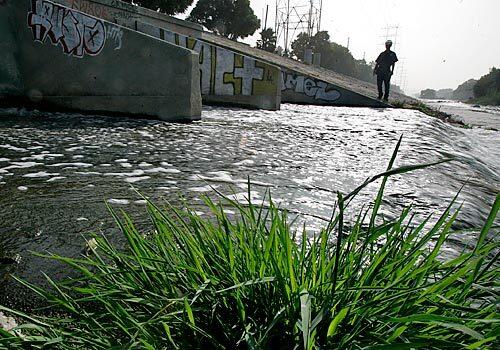
Most of the Los Angeles River’s flow these days consists of reclaimed water dumped by city treatment plants. That has provided a boon for shorebirds downstream during what has been the driest year on record in Los Angeles. Here, treated effluent from the L.A.-Glendale water treatment plant flows into the river near Griffith Park. (Luis Sinco / Los Angeles Times)
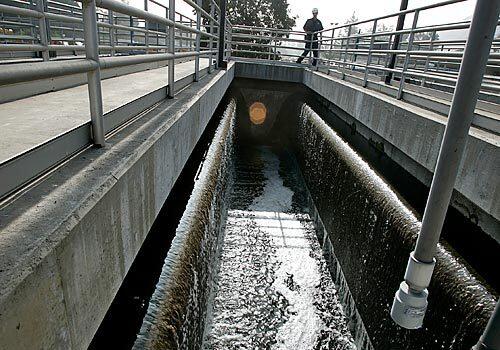
Effluent is processed at the Los Angeles-Glendale water treatment plant before it is released into the Los Angeles River near Griffith Park. The city uses such recycled water for only 1% of its irrigation needs; the vast majority of the flow from two Valley facilities ends up in the river. (Luis Sinco / Los Angeles Times)
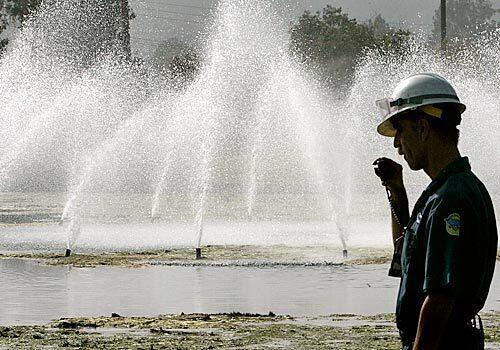
Plant operator David Bianchi checks a pool designed to remove chlorine naturally from effluent at the L.A.-Glendale water treatment plant. The water will end up in the Los Angeles River. (Luis Sinco / Los Angeles Times)
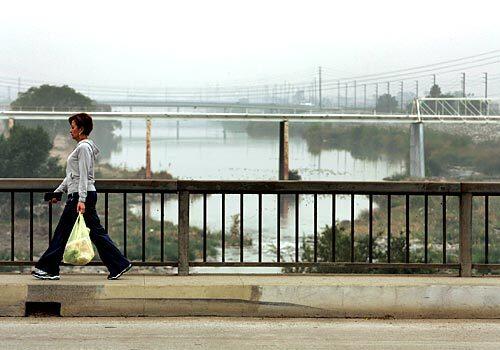
The Willow Street Bridge spans the Los Angeles River in Long Beach, where the abundant water has created a sanctuary for shorebirds despite this year’s scant rainfall. Virtually none of the river’s water is there naturally -- most of it has been reclaimed from two Los Angeles treatment plants far upstream. (Allen J. Schaben / Los Angeles Times)
Advertisement
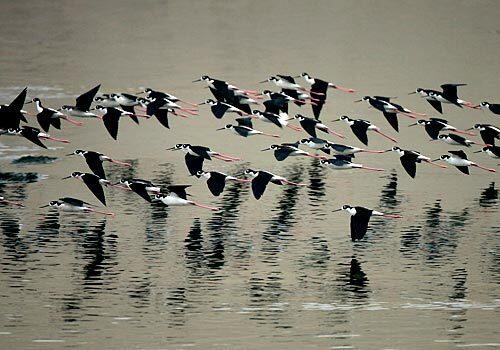
Black-necked stilts fly in formation before landing in the Los Angeles River in Long Beach. The abundant flow of recycled water from city treatment facilities has made the river’s southern reaches popular with birds -- and birders. We dont see any obvious negative impacts on the birds. The young stilts seem to have the right number of legs and eyes, says Kimball L. Garrett, ornithology collections manager at the Los Angeles County Museum of Natural History. (Allen J. Schaben / Los Angeles Times)
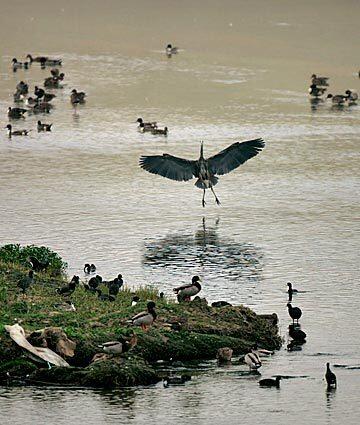
A great blue heron lands amid hundreds of ducks and birds in the Los Angeles River in Long Beach. No way am I saying that the concrete L.A. River channel is the ideal shorebird habitat, said Kimball L. Garrett of the Los Angeles County Museum of Natural History. But its the best we have left. (Allen J. Schaben / Los Angeles Times)
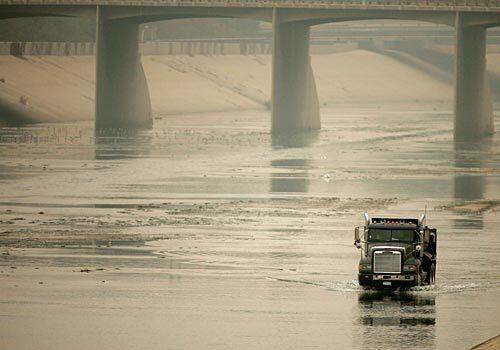
A truck makes its way through the Los Angeles River near the 405 and 710 freeways. Though otherwise typical of the built-up urban landscape, the concrete channel has become a haven for birds. (Allen J. Schaben / Los Angeles Times)







